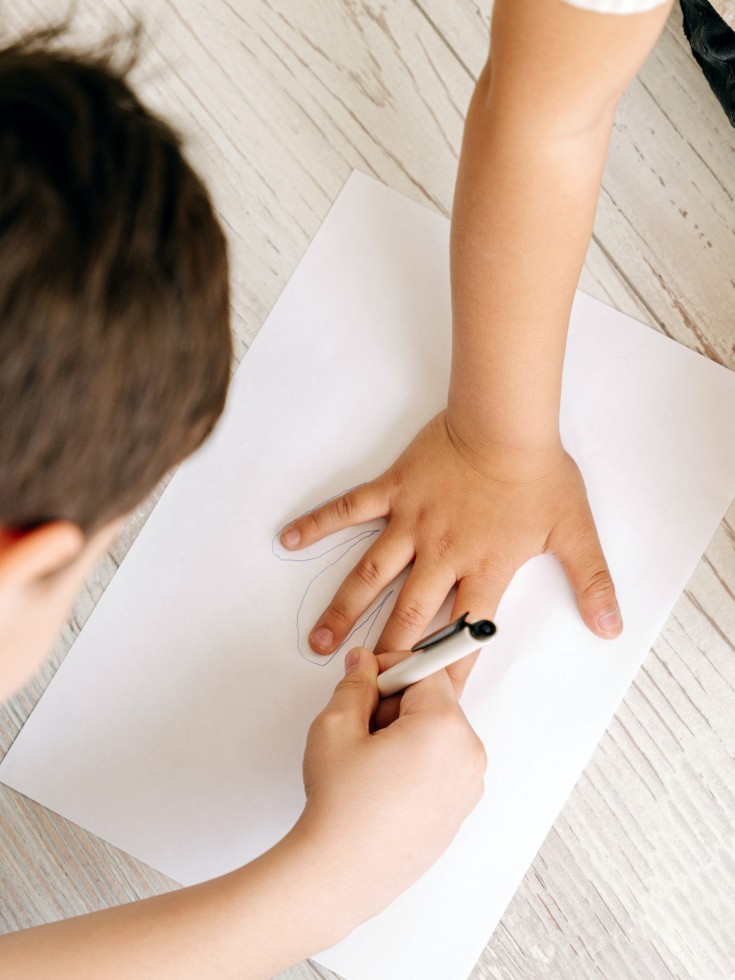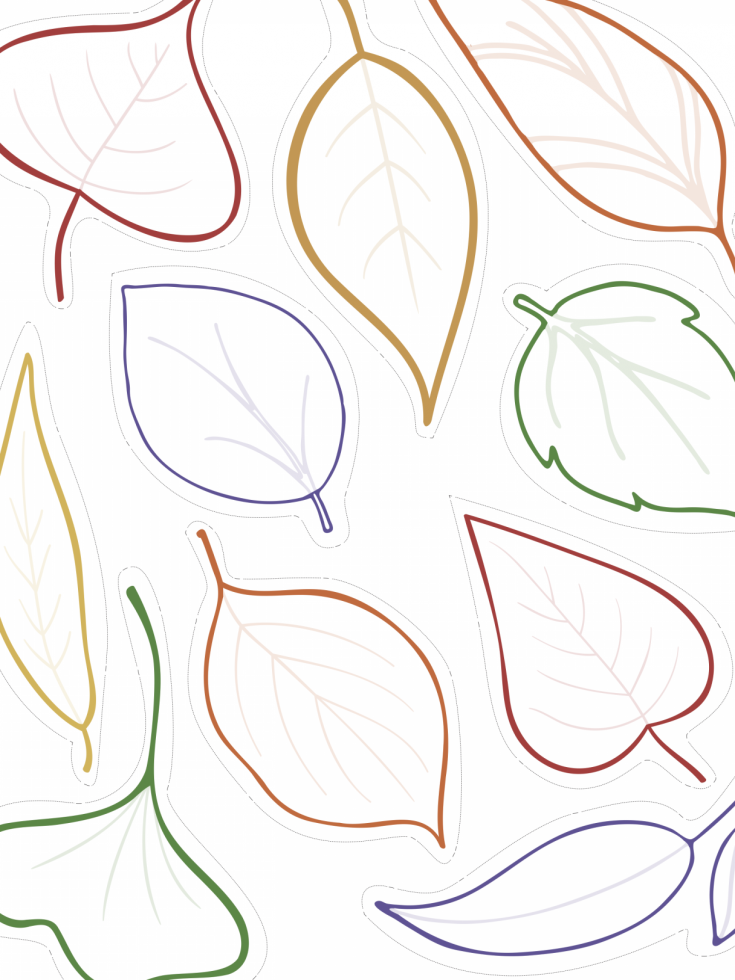Tapping into creativity can help people feel fulfilled, relaxed, and better able to face complicated issues in their lives. Did you know that Sheppard Pratt has art therapists working in a variety of its settings?
Try out this fun fall craft below with the whole family!
Instructions
1) Trace your hand on a blank sheet of paper—this will be your tree trunk. Leave space above your fingers to glue on leaves. Decorate the trunk any way you wish.
2) Trace the leaves below or cut them out along the dotted lines.
3) Decorate them any way you want! Color them with colored pencils or crayons. Glue on leaves from your yard, glitter, stickers, or anything you want! Write what you’re grateful for inside the leaf.
4) Glue your leaves onto your tree.
5) Share your work! Have a conversation with your family and friends about what you created. Hang it somewhere to be admired!
In many familiar forms of therapy, people talk about problems and learn ways to cope. In Art Therapy, people also use ways other than talking to communicate and learn new ways to manage thoughts, feelings, problems, and patterns.
Our art therapists are licensed professionals trained in both art and therapy. They hold either a master’s or doctorate degree. We sat down with Kathy O’Doherty, one of Sheppard Pratt’s licensed art therapists, to learn more.
What is art therapy?
Art Therapy is a kind of mental health treatment that combines an understanding of human development, psychological theories and perspectives, and the creative process of art making. For those engaged in art therapy, it is a way to process complicated feelings and reach different goals, including adjusting to change, recognizing patterns in their lives, gaining insights about themselves, changing their behaviors, resolving conflicts, developing coping skills and self-esteem, and improving control over their emotions.
Why is it important?
Art Therapy helps the brain to heal; it can be a bridge to healing. It can help a person make connections in their mind. More than 85% of people seeking psychiatric services have experienced some type of trauma, which can slow or stop normal cognitive development. Art Therapy uses the creative process to support both developmental and emotional growth.
Why can it be especially helpful for children?
Art Therapy taps into the creative potential of children and provides a safe, easy way for them to explore thoughts and feelings. Children are often limited in their ability to talk about their feelings. Sometimes feelings and conflicts feel too threatening for a child to face head on. These feelings can be brought out and worked through during the process of creating artwork. Art therapy can help children learn more about themselves and provide an opportunity to experience satisfaction and achievement.
Is art therapy a stand-alone therapy?
Yes, art therapy can be a stand-alone therapy. It can also work together with other therapies. Individuals, groups, or families may seek art therapy either as a stand-alone therapy or as an additional therapy in clinical, educational, or rehabilitative settings.
How does someone become an art therapist?
Art therapists must be trained in both art and therapy. A master’s degree is required, and some therapists also have a doctorate degree. Art therapists are trained in human development, the theory and practice of individual, family, and group counseling, and the study of mental health disorders. Art therapists must also complete supervised clinical internships.




